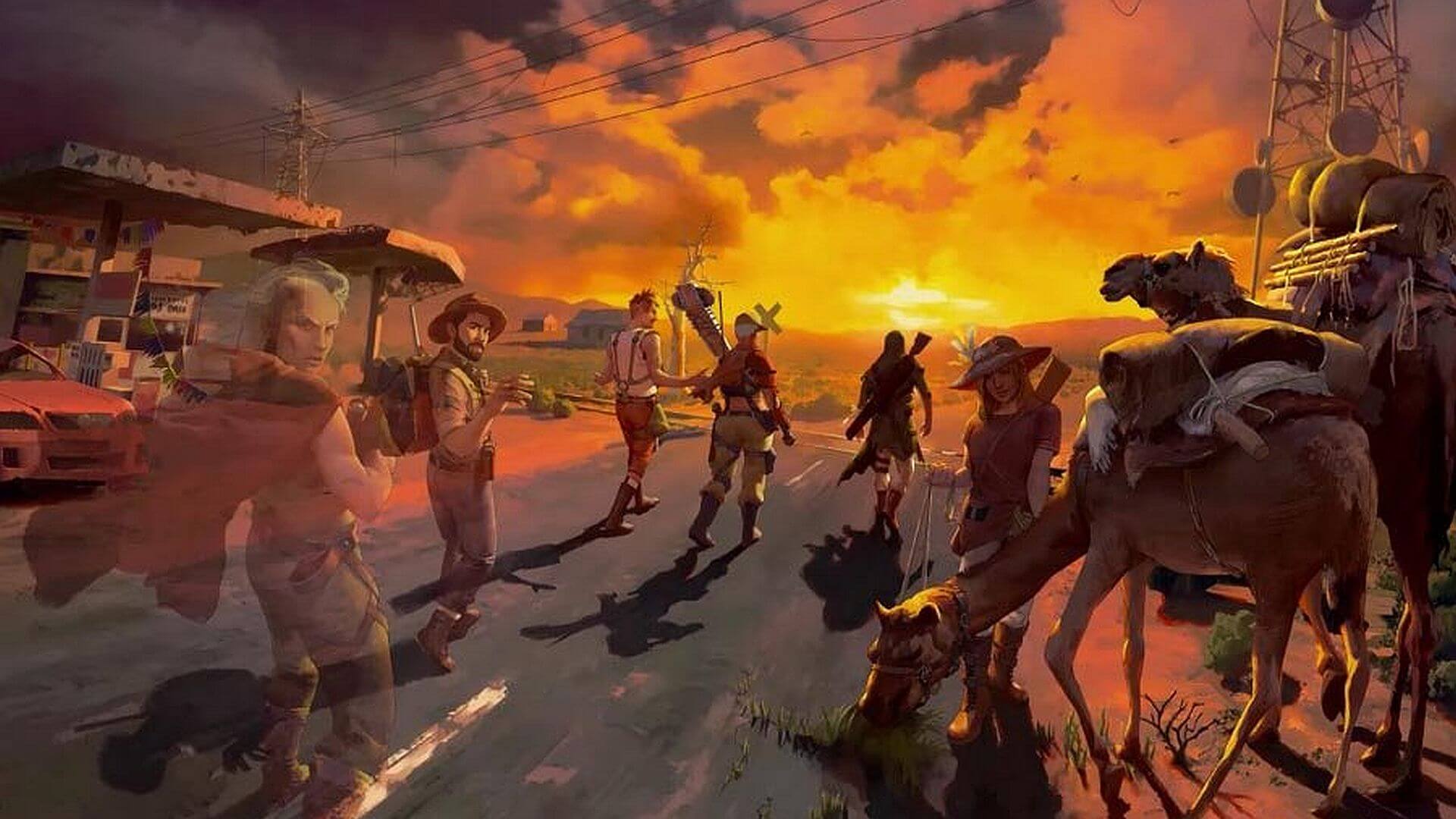Broken Roads has been awaited by fans as a post-apocalyptic CRPG in the vein of classic Fallout. Now that it’s here, the game may not be quite as deep as players were hoping, but there’s a beauty in its simplicity that makes it a memorable experience regardless.
A Post-Apocalyptic Outback
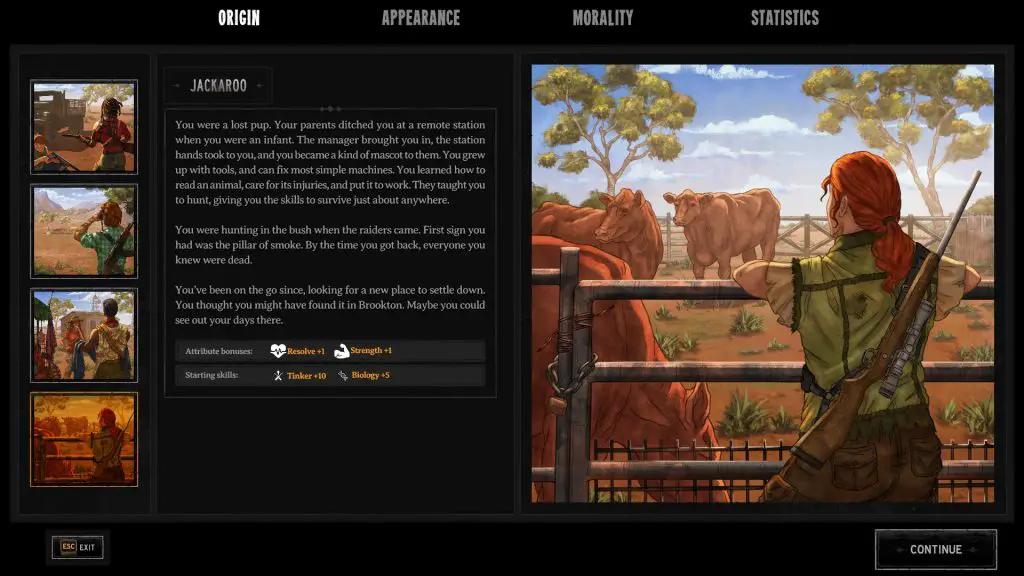
Broken Roads takes place in Western Australia, some four generations after a nuclear war. The devastated world is less Fallout and more The Walking Dead, with survivors banding together in tight-knit communities or turning to banditry to survive. A feeling of tribalism and distrust pervades the setting since resources are scarce due to a fifteen-year drought, and anyone could be a spy or a thief.
At first, the world seems fairly grounded in reality, but some supernatural elements slowly start to creep in. A few hours later, characters with strange powers are introduced – not necessarily magic, but close enough for that to be the best term for it. Learning this power for yourself adds new builds and options in combat. There are also mutated animals roaming the Outback, from bloodthirsty dingoes to ravenous koalas and kangaroos.
The Australian setting is always front and center, and Broken Roads is clearly made by people who love their country and culture deeply and can poke fun at it. There are even tooltips to translate Australian slang for players who don’t hail from the Land Down Under.
The visuals have a comic-book style to them that’s consistent throughout, from towns to combat to narrative cutscenes. However, the overworld map is bare-bones; it gets the job done, but feels unfinished compared to the rest of the game.
Broken Roads’ music consists of wistful guitar strains common in dusty post-apocalyptic settings. It’s relaxing and evocative, and it serves as a great counterpoint to the harder rock tracks that kick in when battling raiders and other hostile humans.
Simple CRPG Gameplay
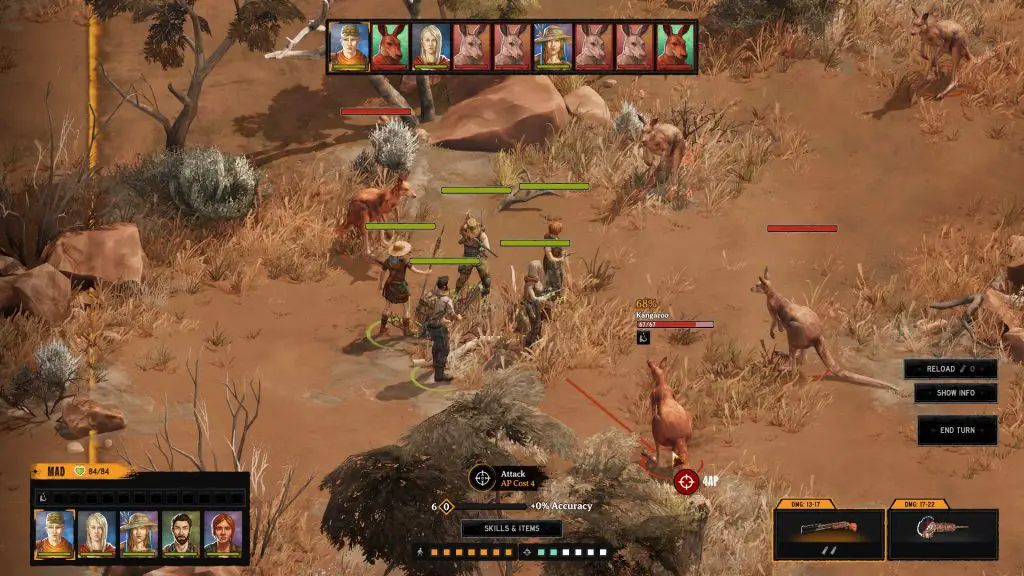
For the most part, Broken Roads’ gameplay is intuitive. Most actions are performed with a simple click, and dialogue options clearly denote how choices will affect your alignment or if they require a skill check. Fights are a major part of the game, especially random encounters while traveling, but still secondary to story and roleplaying.
Combat uses a basic Movement and Action Points system, balanced such that most characters can manage one or two attacks in turn and maybe reload, so long as they don’t use an item or skill. As combatants (friendly and enemy) lose HP, they can gain Injured and Maimed status effects, which reduce their total MP and AP until they can get patched up. There’s no permadeath, and teammates who fall will get back up (albeit in rough shape) if you manage to pull through.
It’s important to have a balance of weapons, as each type of gun has a different optimal range. Pistols can be used at melee range, making them a good choice for characters with a low Strength or Melee skill, while Shotguns, Hunting Rifles, and Sniper Rifles are best at progressively longer ranges. Gear and upgrades get expensive quickly, so for the early parts of the game, you’ll be enhancing your loadout in dribs and drabs, mostly by leveling up via XP rather than buying up quality equipment.
Of course, you could also try for a pacifist run, and there’s even an Achievement available if you manage to get through the game without killing anyone. I certainly don’t know how you’d manage it, but according to Steam’s stats, at least a few people have figured it out.
The Moral Compass
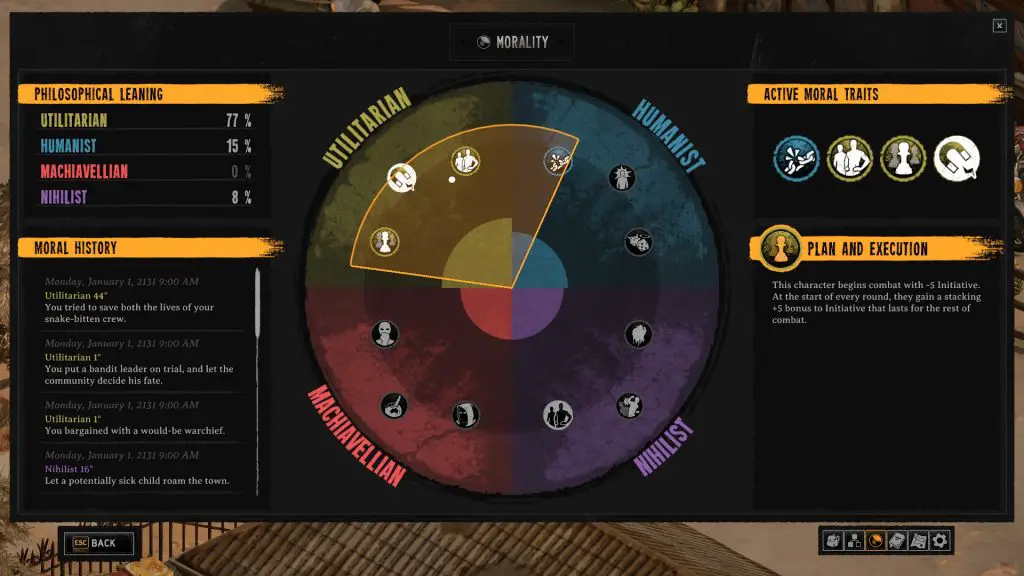
Broken Roads’ standout feature is its alignment system, which dispenses with good versus evil and places characters on a spectrum between four classic schools of philosophy: Humanism, Utilitarianism, Nihilism, and Machiavellianism. Your actions, primarily dialogue choices, will cause your character’s position on the Moral Compass to shift, and it’s possible to overlap between ideals or dedicate yourself fully to a moral stance.
As you’d expect, NPCs and party members who share your philosophy will react better to your choices, while those who disagree will make their displeasure known. However, the Moral Compass is also an important part of your character’s build; the more you commit to a specific ideal, the more you’ll unlock combat abilities associated with it. Utilitarians make great tanks, willing to take hits for party members with less HP, while Nihilists are the opposite, putting their personal survival above all else. Humanists provide buffs and healing, while Machiavellians prefer debuffs and intimidation.
The interplay between these philosophies is at the core of the game’s themes, though it sometimes feels like you’re being hit over the head with them. Loading screens have quotes from famous philosophers, and quest titles are all named after chapters from treatises like The Prince. You can even purchase copies of these books in-game and carry them around in your inventory.
A Right Yarn
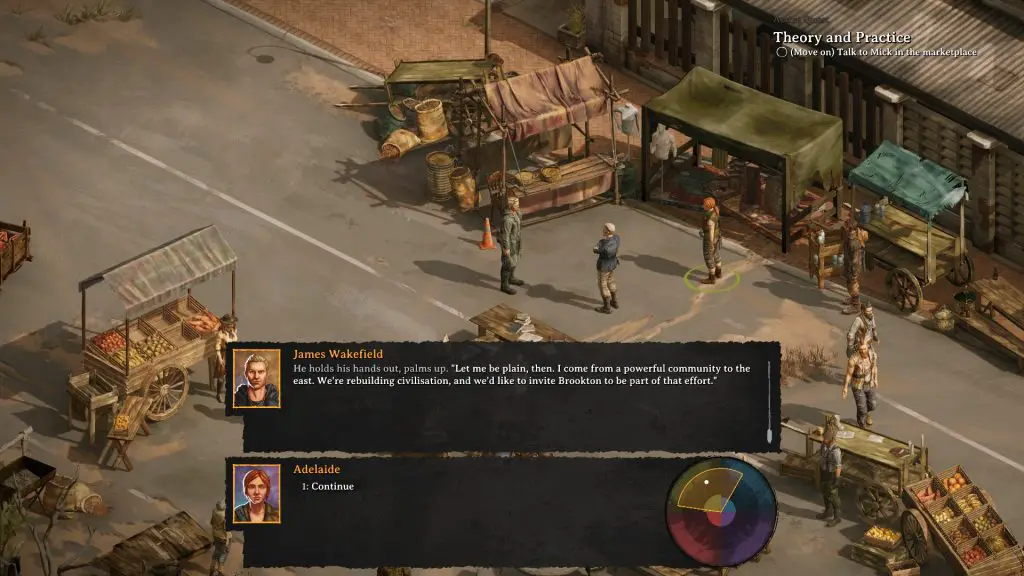
Broken Roads’ plot is a standard hero’s journey; the day you arrive to start a new life in a new town, a powerful group of outsiders destroy it. Escaping with the survivors to the nearby city of Merredin, it’s up to you to pick up the pieces and find a way to rebuild.
The story might just be told through text, but it’s well-written, and the characters all feel human, flaws and all. Like the game’s overall morality system, there are no right or wrong decisions, and some choices might have unintended consequences. For me, this became clear when I helped Numbat, an indentured servant, prove that her contract was up and that she was free. The contract holder accepted the loss and then had Numbat thrown out of town as a freeloader since she was no longer “employed.” I did the right thing from my point of view, but the powers that be responded with malice.
The tree of possible outcomes isn’t anything revolutionary, and in most cases, boils down to whether you want to complete a quest this way or that way, but it’s executed well enough that consequences down the line feel organic. That’s really in keeping with Broken Roads as a whole; it doesn’t do anything that’s really new, but it also doesn’t try to overcomplicate things or reinvent the wheel. It’s not the second coming of Fallout 2, but rather a fun, contemplative RPG that’s more compelling in the quiet moments than in the midst of battle.

